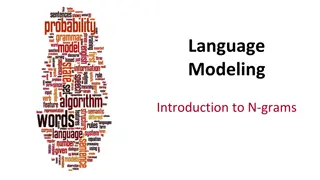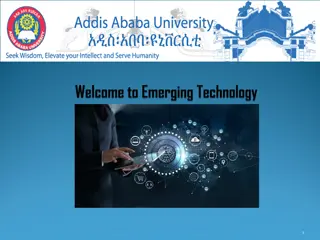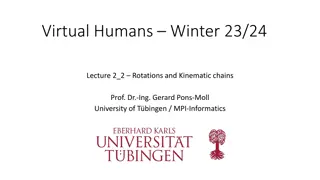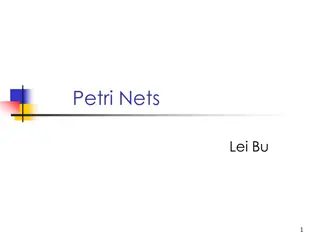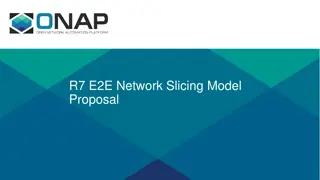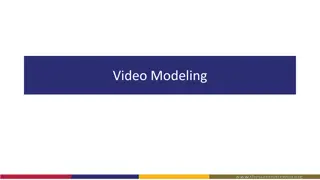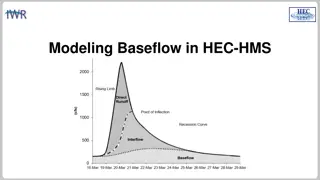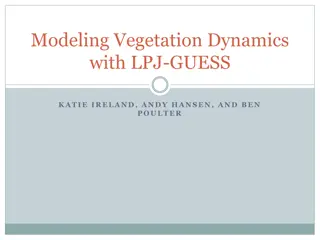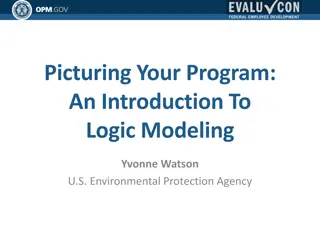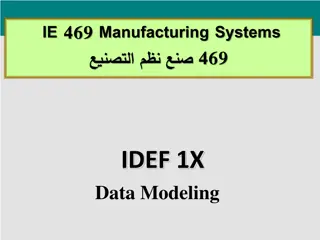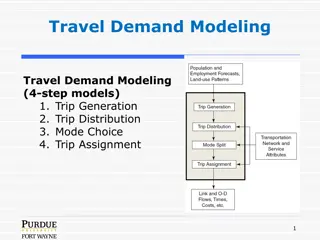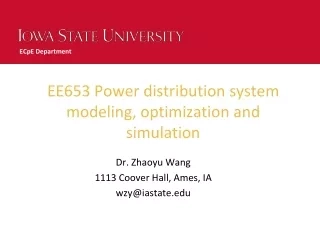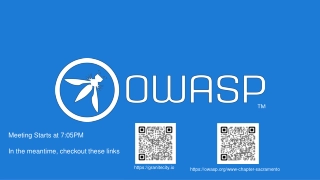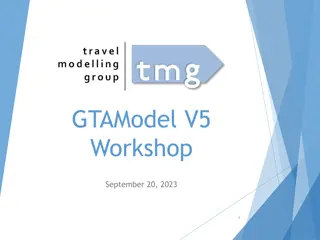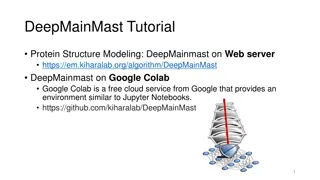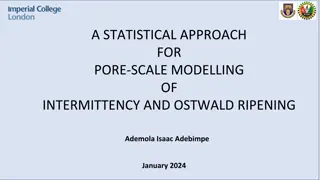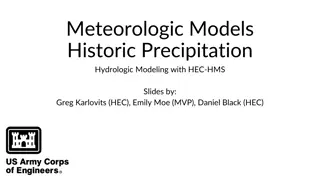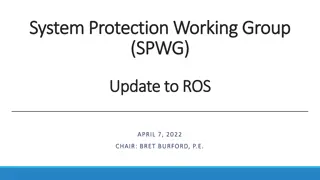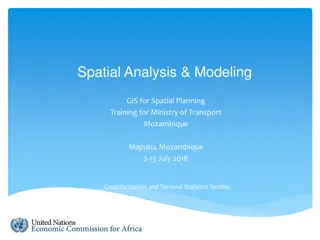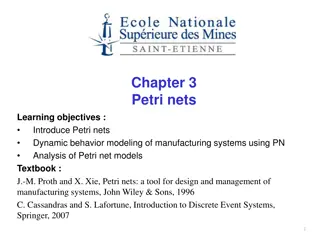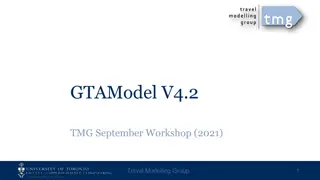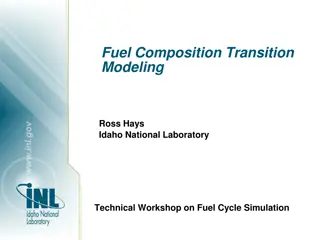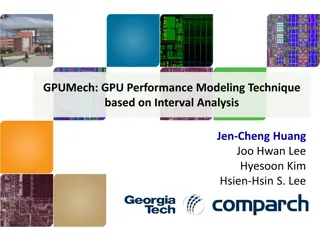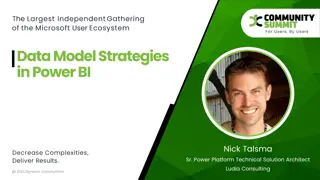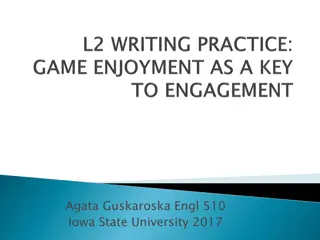Understanding Language Modeling in Human Language Technologies
Exploring the concepts of language modeling in human language technologies, this presentation delves into N-grams, the chain rule of probability, evaluation metrics like perplexity, smoothing techniques such as Laplace, and the goal of assigning probabilities to sentences. It covers applications like machine translation, spell correction, speech recognition, language identification, and summarization. Language models play a crucial role in tasks like speech recognition systems and help in determining the likelihood of sequences of words.
Download Presentation

Please find below an Image/Link to download the presentation.
The content on the website is provided AS IS for your information and personal use only. It may not be sold, licensed, or shared on other websites without obtaining consent from the author. Download presentation by click this link. If you encounter any issues during the download, it is possible that the publisher has removed the file from their server.
E N D
Presentation Transcript
Universit di Pisa Language Modeling Human Language Technologies Universit di Pisa Giuseppe Attardi IP notice: some slides from: Dan Jurafsky, Jim Martin, Sandiway Fong, Dan Klein
Outline Language Modeling (N-grams) N-gram Intro The Chain Rule The Shannon Visualization Method Evaluation: Perplexity Smoothing: Laplace (Add-1) Add-prior
Probabilistic Language Model Goal: assign a probability to a sentence Machine Translation: P(high winds tonite) > P(large winds tonite) Spell Correction The office is about fifteen minuets from my house" P(about fifteen minutes from) > P(about fifteen minuets from) Speech Recognition P(I saw a van) >> P(eyes awe of an) Language identification s from unknown language Ita or Eng Lita, Leng language modele for Italian and Ebglish LIts(s) > LEng(s) Summarization, question-answering, etc.
Why Language Models We have an English speech recognition system, which answer is better? Speech Interpretation speech recognition system speech cognition system speck podcast histamine Language models tell us the answer!
Language Modeling We want to compute P(w1,w2,w3,w4,w5 wn) = P(W) = the probability of a sequence Alternatively we want to compute P(w5|w1,w2,w3,w4) = the probability of a word given some previous words The model that computes P(W) or P(wn|w1,w2 wn-1) is called the language model. A better term for this would be The Grammar But Language model or LM is standard
Computing P(W) How to compute this joint probability: P( the , other , day , I , was , walking , along , and , saw , a , lizard ) Intuition: let s rely on the Chain Rule of Probability
The Chain Rule Recall the definition of conditional probabilities P(B| A)=P(A B) Rewriting: P(A) P(A B)=P(A)P(B|A) More generally P(A,B,C,D) = P(A)P(B|A)P(C|A,B)P(D|A,B,C) In general P(x1,x2,x3, xn) = P(x1)P(x2|x1)P(x3|x1,x2) P(xn|x1 xn-1)
The Chain Rule applied to joint probability of words in sentence P( the big red dog was ) = P(the) P(big|the) P(red|the big) P(dog|the big red) P(was|the big red dog)
Obvious estimate How to estimate? P(the | its water is so transparent that) P(the | its water is so transparent that) = C(its water is so transparent that the) ____________________________________________________________________________________________ C(its water is so transparent that)
Unfortunately There are a lot of possible sentences We will never be able to get enough data to compute the statistics for those long prefixes P(lizard|the,other,day,I,was,walking,along,and,saw,a) or P(the|its water is so transparent that)
Markov Assumption Make the simplifying assumption P(lizard|the, other, day, I, was, walking, along, and, saw, a) = P(lizard|a) or maybe P(lizard|the, other, day, I, was, walking, along, and, saw, a) = P(lizard|saw,a)
Markov Assumption So for each component in the product, replace with the approximation (assuming a prefix of N) n 1) P(wn |wn N+1 n 1 P(wn |w1 ) Bigram model P(wn|w1 n 1) P(wn|wn 1)
N-gram models We can extend to trigrams, 4-grams, 5-grams In general this is an insufficient model of language because language has long-distance dependencies: The computer which I had just put into the machine room on the fifth floor crashed. But we can often get away with N-gram models
Estimating bigram probabilities The Maximum Likelihood Estimate P(wi|wi 1) =count(wi 1,wi) count(wi 1) P(wi|wi 1) =c(wi 1,wi) c(wi 1)
An example <s> I am Sam </s> <s> Sam I am </s> <s> I do not like green eggs and ham </s> This is the Maximum Likelihood Estimate, because it is the one which maximizes P(Training set|Model)
Maximum Likelihood Estimates The Maximum Likelihood Estimate of some parameter of a model M from a training set T is the estimate that maximizes the likelihood of the training set T given the model M Suppose the word Chinese occurs 400 times in a corpus of a million words (e.g. the Brown corpus) What is the probability that a random word from some other text will be Chinese MLE estimate is 400/1000000 = .004 This may be a bad estimate for some other corpus But it is the estimate that makes it most likely that Chinese will occur 400 times in a million word corpus.
Maximum Likelihood We want to estimate the probability, p, that individuals are infected with a certain kind of parasite. Ind. Infected Probability of observation p 1 p p p 1 p p p 1 p 1 p p The maximum likelihood method (discrete distribution): 1. Write down the probability of each observation by using the model parameters 2. Write down the probability of all the data 1 2 3 4 5 6 7 8 9 10 1 0 1 1 0 1 1 0 0 1 P(Data|?) = ?6(1 ?)4 1. Find the value parameter(s) that maximize this probability
Maximum likelihood We want to estimate the probability, p, that individuals are infected with a certain kind of parasite. Likelihood function: Ind. Infected Probability of observation p 1 p p p 1 p ?(?) = P(Data|?) = ?6(1 ?)4 1 2 3 4 5 6 7 8 9 10 1 0 1 1 0 1 1 0 0 1 - Find the value parameter(s) that maximize this probability 0.0012 0.0008 p L(p, K, N) p 0.0004 1 p 1 p 0.0000 p 0.0 0.2 0.4 0.6 0.8 1.0 p
Computing the MLE Set the derivative to 0: ? ???6(1 ?)4= 0 = 6?5(1 ?)4 ?64 1 ?3= ?5(1 ?)36 1 ? 4? = ?51 ?3(6 10?) Solutions: p = 0 p = 1 p = 0.6 (minimum) (minimum) (maximum)
More examples: Berkeley Restaurant Project can you tell me about any good cantonese restaurants close by mid priced thai food is what i m looking for tell me about chez panisse can you give me a listing of the kinds of food that are available i m looking for a good place to eat breakfast when is caffe venezia open during the day
Raw bigram counts Out of 9222 sentences I want 827 0 0 0 0 0 0 0 to 0 608 4 2 0 15 0 1 eat 9 1 686 0 0 0 0 0 chinese food 0 6 2 16 0 1 0 0 lunch 0 5 6 42 1 0 0 0 spend 2 1 211 0 0 0 0 0 i 5 2 2 0 1 15 2 1 0 6 0 2 82 4 1 0 want to eat chinese food lunch spend
Raw bigram probabilities Normalize by unigrams (divide by C(w-1)): i want 927 to eat 746 chinese food 158 lunch 341 spend 278 2533 2417 1093 Result: i want 0.33 0 0 0 0 0 0 0 to 0 eat chinese food 0 lunch 0 spend 0.00079 i 0.002 0.0022 0.00083 0 0.0036 0.0011 0.0065 0.0065 0.0054 0.0011 0.0017 0.028 0.00083 0.0027 0 0.0021 0.0027 0.056 0 0 0 0.014 0 0.00092 0.0037 0 0 0 0.0036 0 0 0 want to eat chinese 0.0063 food lunch spend 0.66 0 0.0025 0.087 0 0 0 0 0 0.52 0.0063 0 0 0 0.0014 0.0059 0.0036 0.0029 0
Bigram estimates of sentence probabilities P(<s> i want english food </s>) = P(i|<s>) P(want|i) P(english|want) P(food|english) P(</s>|food) = 0.000031
Captures Rough Linguistic Knowledge P(english | want) = 0.0011 P(chinese | want) = 0.0065 P(to | want) = .66 P(eat | to) = .28 P(food | to) = 0 P(want | spend) = 0 P(i | <s>) = .25
Practical Issues Compute in log space Avoid underflow Adding is faster than multiplying log(p1 p2 p3 p4) = log(p1) + log(p2) + log(p3) + log(p4)
Shannons Game What if we turn these models around and use them to generate random sentences that are like the sentences from which the model was derived. Jim Martin
The Shannon Visualization Method Generate random sentences: 1. Choose a random bigram <s>, w according to its probability 2. Choose a random bigram (w, x) according to its probability 3. repeat until we choose </s> 4. string the words together <s> I I want want to to eat eat Chinese Chinese food food </s>
Approximating Shakespeare Unigram To him swallowed confess hear both. Which. Of save on trail for are ay device and rote life have Every enter now severally so, let Hill he late speaks; or! a more to leg less first you enter Are where exeunt and sighs have rise excellency took of.. Sleep knave we. near; vile like Bigram What means, sir. I confess she? then all sorts, he is trim, captain. Why dost stand forth thy canopy, forsooth; he is this palpable hit the King Henry. Live king. Follow. What we, hath got so she that I rest and sent to scold and nature bankrupt, nor the first gentleman? Trigram Sweet prince, Falstaff shall die. Harry of Monmouth s grave. This shall forbid it should be branded, if renown made it empty. Indeed the duke; and had a very good friend. Fly, and will rid me these news of price. Therefore the sadness of parting, as they say, tis done. Quadrigram King Henry. What! I will go seek the traitor Gloucester. Exeunt some of the watch. A great banquet serv d in; Will you not tell me who I am? It cannot be but so. Indeed the short and the long. Marry, tis a noble Lepidus.
Shakespeare as corpus N=884,647 tokens, V=29,066 Shakespeare produced 300,000 bigram types out of V2= 844 million possible bigrams: so, 99.96% of the possible bigrams were never seen (have zero entries in the table) Quadrigrams: What's coming out looks like Shakespeare because it is Shakespeare
The Wall Street Journal is not Shakespeare (no offense) Unigram Months the my and issue of year foreign new exchange s september were recession ex- change new endorsed a acquire to six executives Bigram Last December through the way to preserve the Hudson corporation N. B. E. C. Taylor would seem to complete the major central planners one point five percent of U. S. E. has already old M. X. corporation of living on information such as more frequently fishing to keep her Trigram They also point to ninety nine point six billion dollars from two hundred four oh six three percent of the rates of interest stores as Mexico and Brazil on market conditions
OpenAI Model (2019) Large-scale unsupervised language model which generates coherent paragraphs of text, achieves state-of-the-art performance on many language modeling benchmarks, and performs rudimentary reading comprehension, machine translation, question answering, and summarization all without task-specific training. Model, called GPT-2, was trained simply to predict the next word in 40GB of Internet text. Due to our concerns about malicious applications of the technology, we are not releasing the trained model. https://blog.openai.com/better-language-models/
GPT-2 Samples SYSTEM PROMPT (HUMAN-WRITTEN) In a shocking finding, scientist discovered a herd of unicorns living in a remote, previously unexplored valley, in the Andes Mountains. Even more surprising to the researchers was the fact that the unicorns spoke perfect English. MODEL COMPLETION (MACHINE-WRITTEN, 10 TRIES) The scientist named the population, after their distinctive horn, Ovid s Unicorn. These four-horned, silver-white unicorns were previously unknown to science. Now, after almost two centuries, the mystery of what sparked this odd phenomenon is finally solved. Dr. Jorge P rez, an evolutionary biologist from the University of La Paz, and several companions, were exploring the Andes Mountains when they found a small valley, with no other animals or humans. P rez noticed that the valley had what appeared to be a natural fountain, surrounded by two peaks of rock and silver snow.
Lesson 1: the Perils of Overfitting N-grams only work well for word prediction if the test corpus looks like the training corpus In real life, it often doesn t We need to train robust models, adapt to test set, etc.
Train and Test Corpora A language model must be trained on a large corpus of text to estimate good parameter values. Model can be evaluated based on its ability to predict a high probability for a disjoint (held-out) test corpus (testing on the training corpus would give an optimistically biased estimate). Ideally, the training (and test) corpus should be representative of the actual application data. May need to adapt a general model to a small amount of new (in- domain) data by adding highly weighted small corpus to original training data.
Smoothing Since there are a combinatorial number of possible word sequences, many rare (but not impossible) combinations never occur in training, so MLE incorrectly assigns zero to many parameters (aka sparse data). If a new combination occurs during testing, it is given a probability of zero and the entire sequence gets a probability of zero (i.e. infinite perplexity). Parameters are smoothed (aka regularized) to reassign some probability mass to unseen events. Adding probability mass to unseen events requires removing it from seen ones (discounting) in order to maintain a joint distribution that sums to 1.
Smoothing is like Robin Hood Steal from the rich and give to the poor (in probability mass) Slide from Dan Klein
Laplace smoothing Also called add-one smoothing Just add one to all the counts! Very simple ? ?? =?? MLE estimate: ? ?????????? =??+ 1 Laplace estimate: ? + ? Reconstructed counts: ? = (??+ 1) ?? ? + ?
Laplace smoothed bigram counts Berkeley Restaurant Corpus I want 828 1 1 1 1 1 1 1 to 1 609 5 3 1 16 1 2 eat 10 2 687 1 1 1 1 1 chinese food 1 7 3 17 1 2 1 1 lunch 1 6 7 43 2 1 1 1 spend 3 2 212 1 1 1 1 1 I 6 3 3 1 2 16 3 2 1 7 1 3 83 5 2 1 want to eat chinese food lunch spend
Laplace-smoothed bigrams ? ??|?? 1 =?(?? 1??) + 1 ?(?? 1) + ?
Note big change to counts C(want to)went from 608 to 238! P(to|want) from .66 to .26! Discount d = c*/c d for chinese food = .10 So in general, Laplace is a blunt instrument A 10x reduction! But Laplace smoothing not used for N-grams, as we have much better methods Despite its flaws Laplace (add-k) is however still used to smooth other probabilistic models in NLP, especially For pilot studies in domains where the number of zeros isn t so huge.
Add-k Add a small fraction instead of 1 k = 0.01
Even better: Bayesian unigram prior smoothing for bigrams Maximum Likelihood Estimation P(w2|w1) =C(w1,w2) C(w1) Laplace Smoothing PLaplace(w2|w1) =C(w1,w2)+1 C(w1)+vocab Bayesian Prior Smoothing PPrior(w2|w1) =C(w1,w2)+ P(w2) C(w1)+1
Lesson 2: zeros or not? Zipf s Law: A small number of events occur with high frequency A large number of events occur with low frequency You can quickly collect statistics on the high frequency events You might have to wait an arbitrarily long time to get valid statistics on low frequency events Result: Our estimates are sparse! no counts at all for the vast bulk of things we want to estimate! Some of the zeroes in the table are really zeros But others are simply low frequency events you haven't seen yet. After all, ANYTHING CAN HAPPEN! How to address? Answer: Estimate the likelihood of unseen N-grams! Slide from B. Dorr and J. Hirschberg
Zipf's law decompressor are needed to see this picture. f 1/r (f proportional to 1/r) there is a constant k such that f r = k
Zipf law: interpretation Principle of least effort: both the speaker and the hearer in communication try to minimize effort: Speakers tend to use a small vocabulary of common (shorter) words Hearers prefer a large vocabulary of rarer less ambiguous words Zipf's law is the result of this compromise Other laws: Number of meanings m of a word obeys the law: m 1/ f Inverse relationship between frequency and length
Practical Issues We do everything in log space Avoid underflow (also adding is faster than multiplying)
Language Modeling Toolkits SRILM http://www.speech.sri.com/projects/srilm/ IRSTLM Ken LM




















